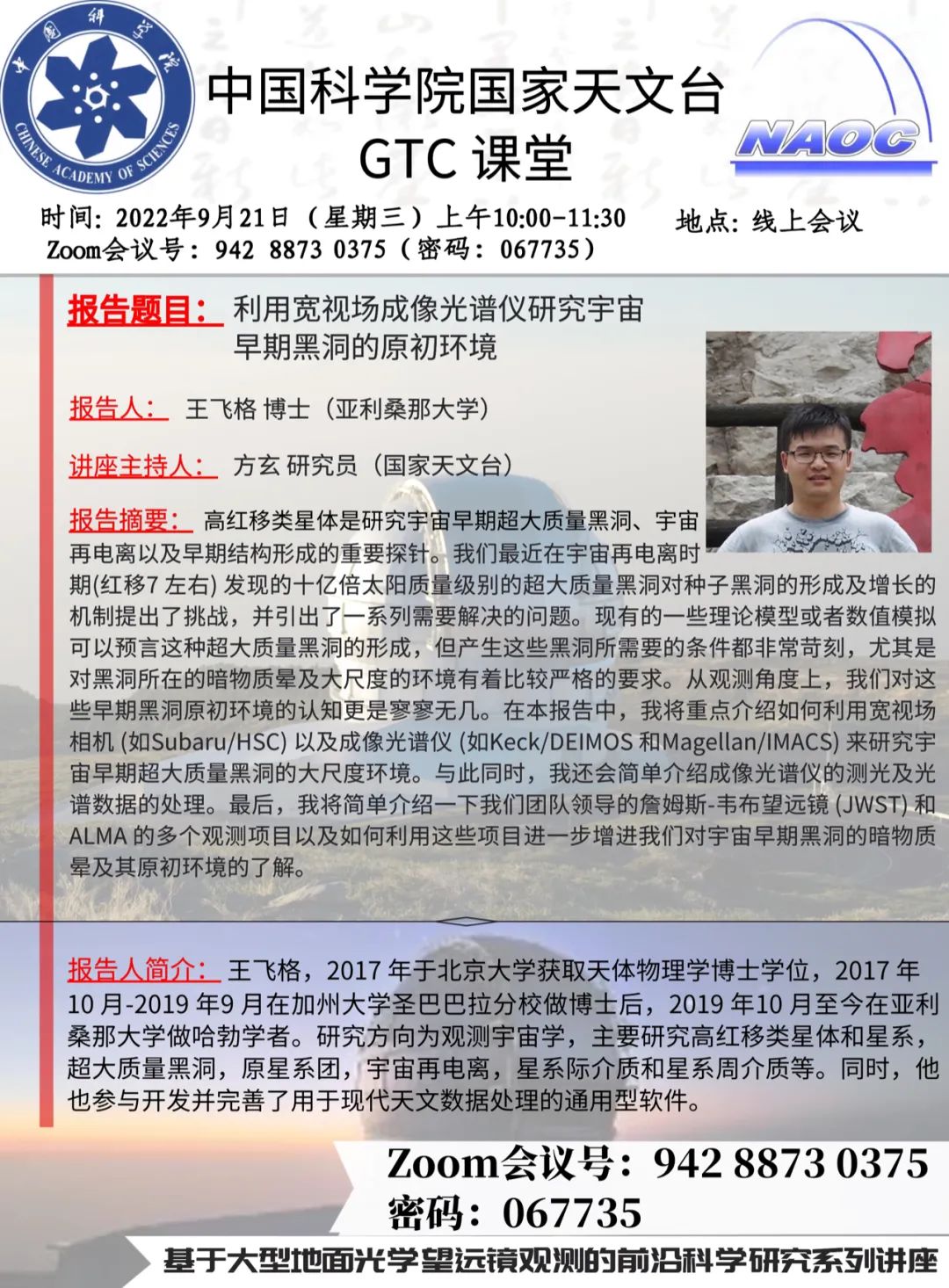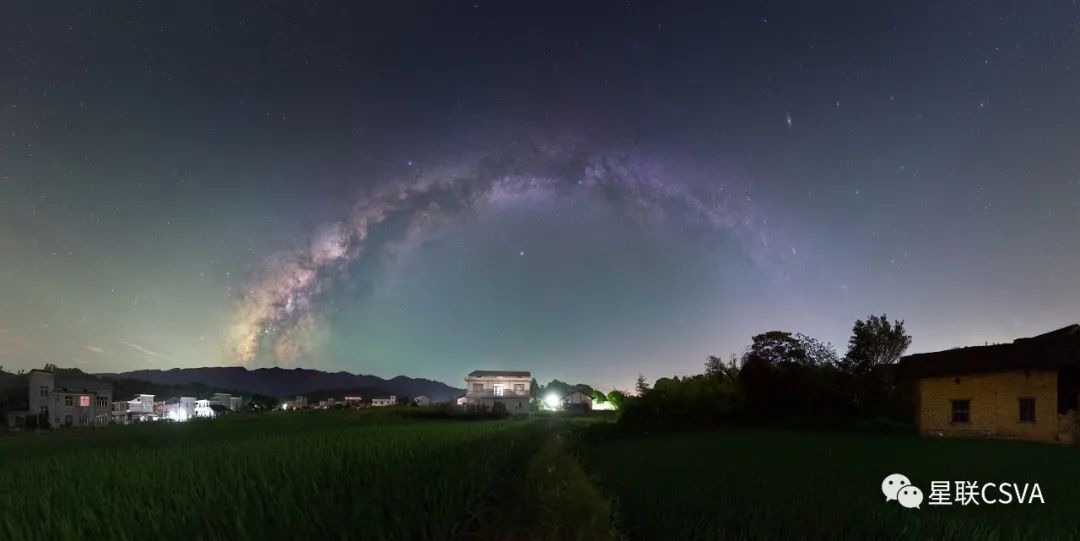National Observatory "GTC Class" | Use the wide -view field imaging spectrometer to study the original environment of the early black holes in the universe
Author:National Observatory of the Ch Time:2022.09.19
National Observatory "GTC Class"
Topic: Use the wide -looking imaging imaging spectrometer to study the original environment of the early black hole in the universe
Abstract: The high -red shift star is an important probral for studying the early oversized black holes of the universe, the dismissal of the universe, and the formation of the early structure. We recently challenged the formation and growth mechanism of seed black holes during the universe (about 7 red shifts around 7). Some of the existing theoretical models or numerical simulation can predict the formation of this large quality black hole, but the conditions for these black holes are very harsh, especially for the dark material halo and large -scale environment of the black hole. From the perspective of observation, we have very few understanding of these early black holes. In this report, I will focus on how to use the wide -looking camera (such as Subaru/HSC) and the imaging spectrometer (such as KECK/Deimos and Magellan/Imacs) to study the large -scale environment of the early oversized black holes in the universe. At the same time, I will briefly introduce the metering of the imaging spectrometer and the processing of spectral data. In the end, I will briefly introduce the James-Wob telescope (JWST) and ALMA's observation items led by our team, as well as how to use these projects to further enhance our understanding of the dark matter halo and its original environment of the early black holes in the universe.
Personal profile: Wang Feige, who obtained a doctorate degree in celestial physics at Peking University in 2017, from October 2017 to September 2019 at the University of California Santa Barbara, a postdoctoral school, and since October 2019, he worked as a Hubble Scholar at the University of Arizona. Essence The research direction is observing cosmic science. It mainly studies high -red shifts and galaxies, large quality black holes, original galaxy groups, cosmic recreation, galaxy media and galaxy permeal media. At the same time, he also participated in the development and improved universal software for modern astronomical data processing.
Title: The Environment of the Earliest SuperMassive Black Holes
Abstract:Distant quasars are believed to be powered by accreting supermassive black holes (SMBHs) and hosted by massive galaxies. The discovery of quasars in the Epoch of Reionization, powered by billion-solar-mass black holes, challenges our understanding of SMBH formation. An assortment of cosmological simulation models can produce these massive SMBHs starting with massive seed black holes, growing from the most biased dark matter halos and situated in the most overdone regions of the early Universe. However, the large-scale environment and the host dark matter halo of these earliest SMBHs are still largely unknown in the observational perspective. In this talk, I will present our recent efforts on characterizing the primordial environment of the earliest SMBHs with wide-field imaging and multi-slit spectroscopy, especially using Magellan/IMACS and KECK/DEIMOS, and Discuss About its implications on the black house fueling mechaanisms. I will also Briefly INTRODUCE OUR UPCOMING JWST. ALMA observations which will revolutionize our understanding about the formation of the first generation SMBHs.Bio:Feige Wang got his PhD from Peking University in 2017. From 2017 to 2019, he was an ENIGMA postdoc scholar at UC Santa Barbara. Since 2019, he has been a NASA Hubble Fellow hosted by the University of Arizona. He is an observational astrophysicist and is interested in studying the most distant quasars and galaxies, the earliest supermassive black holes (SMBHs), proto-clusters, cosmic reionization, and metal enrichment in the Early Universe. He is Also Experienced with Developing Data Reduction Pipelines for Both Wide-Field Camera and Spertrograph.
The mobile phone can directly scan the QR code to watch


Due to the restrictions of WeChat
Computer viewing requires a copy link to the browser to open
Live address
https://dwz.mk/ainenf

- END -
[Daily Star Map] Home Galaxy

/ CSVA Daily Star Picture/Light Hunting: Duan XinThe language hunting language: Th...
Zhang Chaoyang dialogue Yu Minhong: Talking about the universe, anxiety, entrepreneurship, and life

Cover reporter Wu YujiaRecently, Zhang Chaoyang, the founder of Sohu, chairman and...